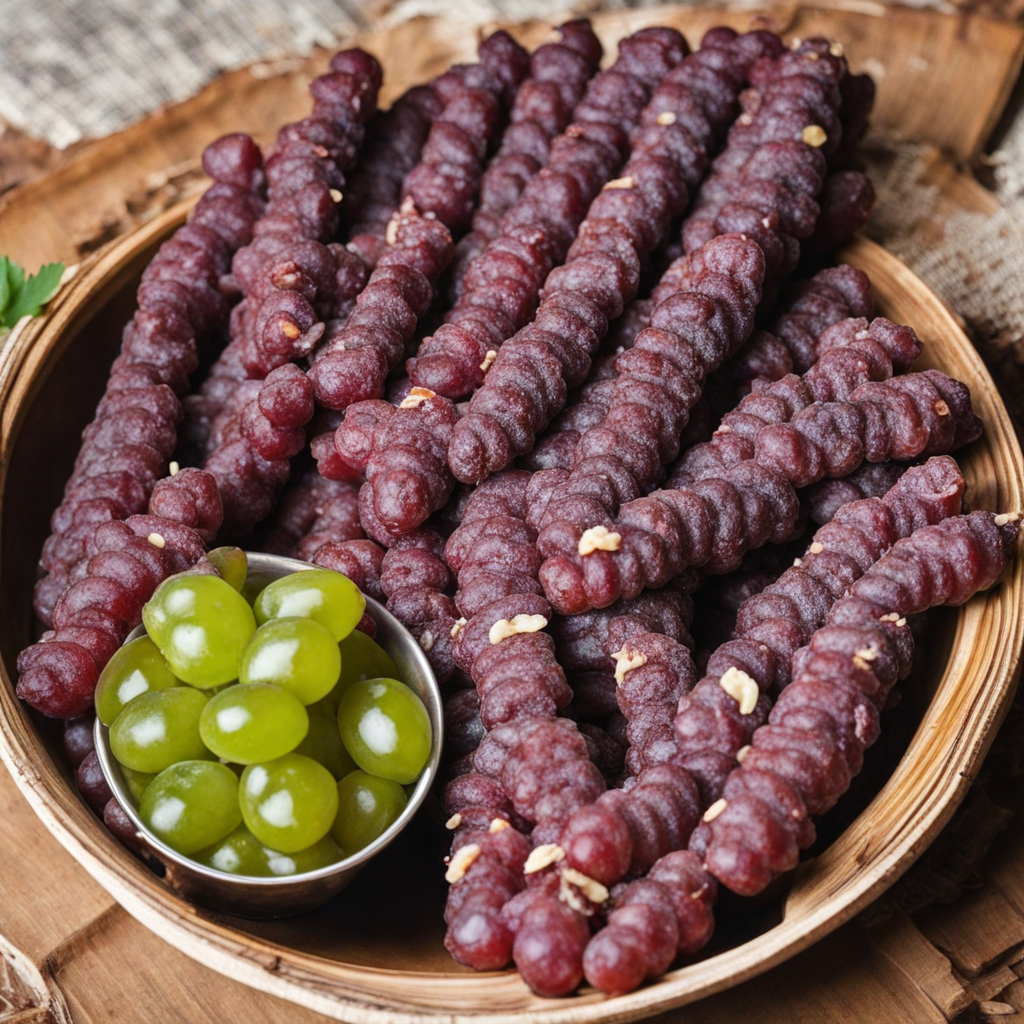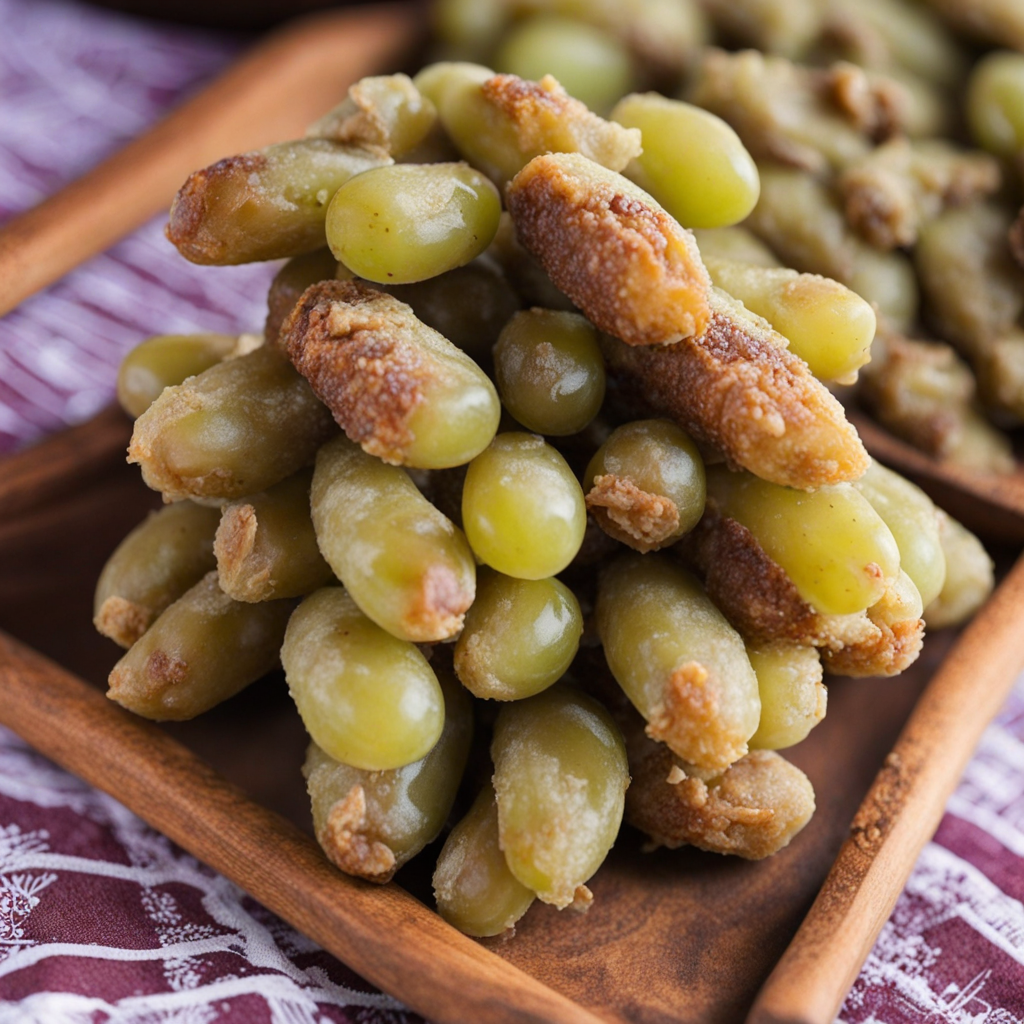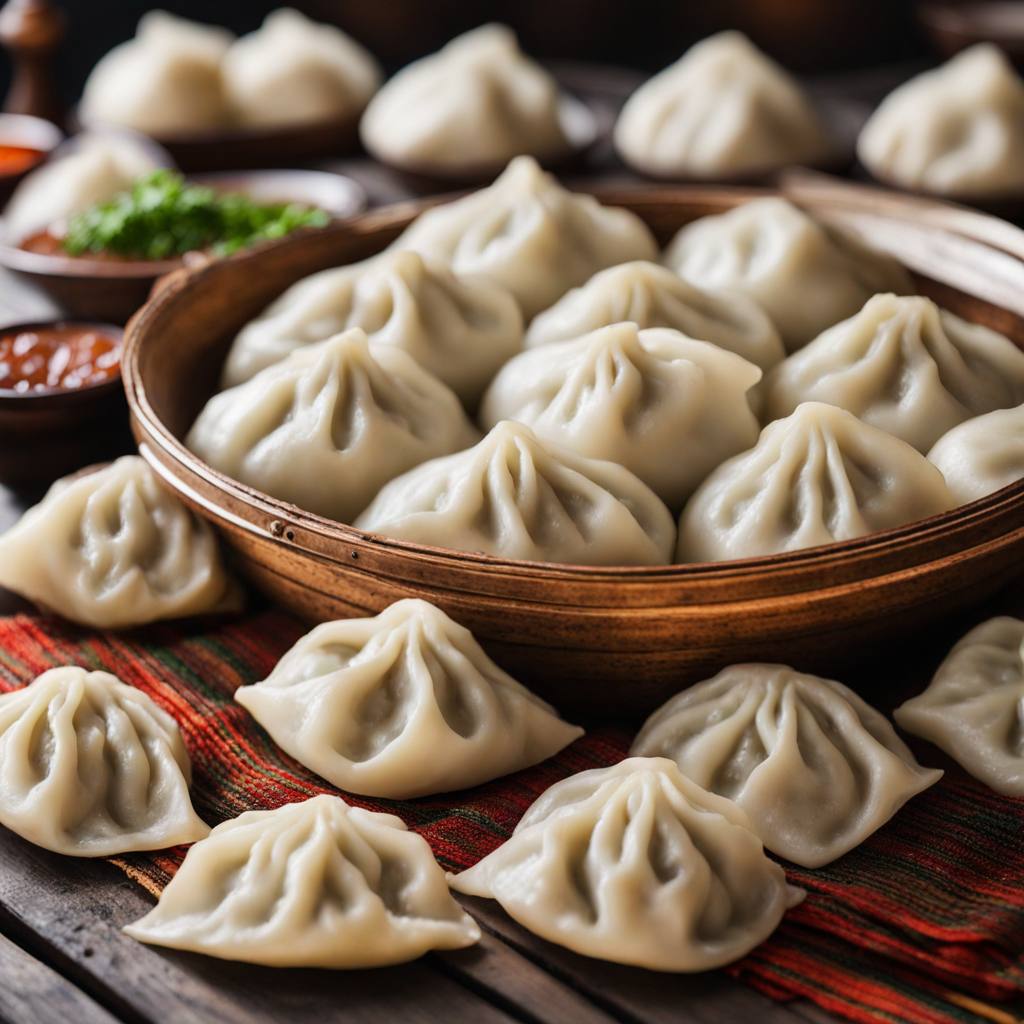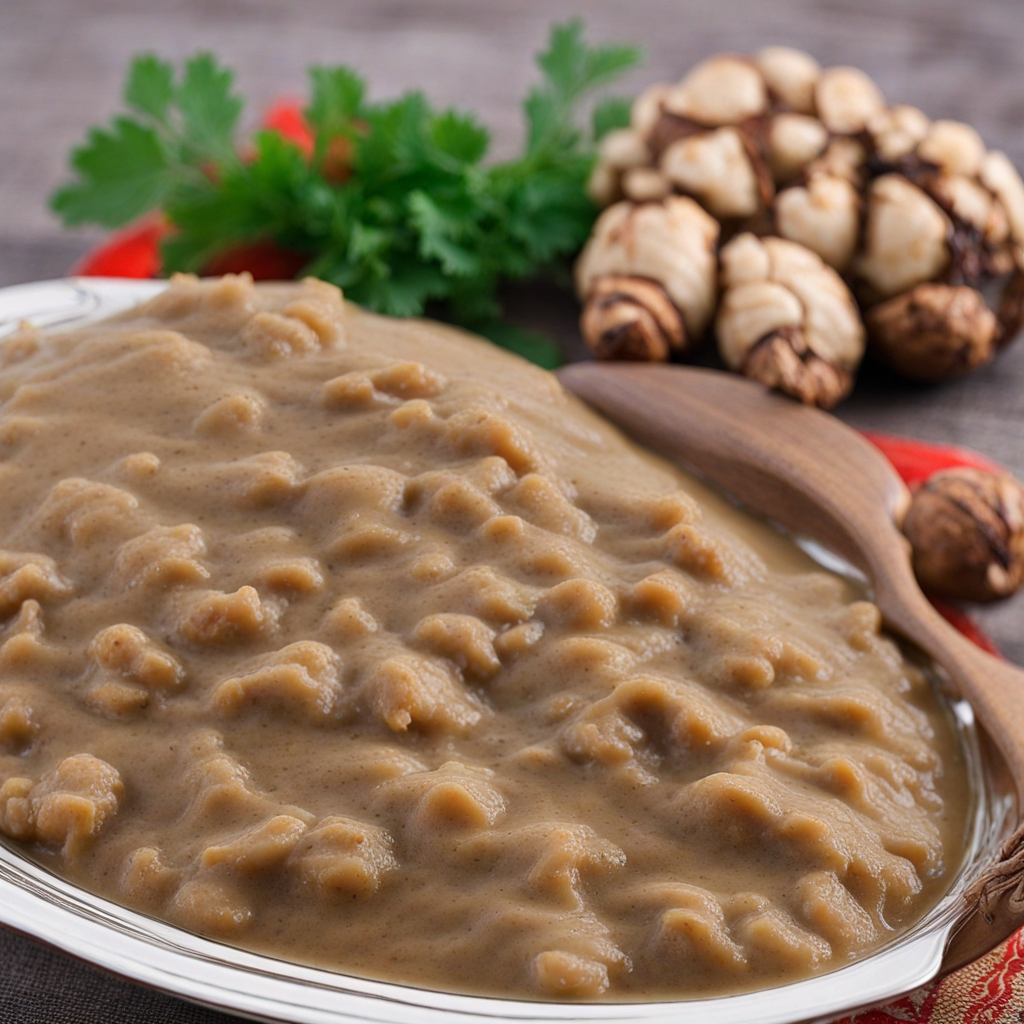Churchkhela
Churchkhela is a traditional Georgian confection that beautifully embodies the essence of the country's rich culinary heritage. Often referred to as "Georgian Snickers," this delightful treat is made by dipping a string of nuts, typically walnuts or hazelnuts, in a thick, sweetened grape juice mixture known as "tatara." The cooking process involves simmering fresh grape juice with flour and sugar, resulting in a luscious, syrupy coating that clings to the nuts as they are strung together. Once the nuts are completely coated, the churchkhela is hung to dry, allowing the mixture to harden into a chewy, delectable snack that is both nutritious and satisfying. As you take a bite of churchkhela, you'll experience a unique combination of flavors and textures. The exterior is slightly chewy, with a glossy finish, while the interior reveals the crunch of the nuts. The sweetness of the grape juice perfectly complements the nutty flavor, creating a harmonious balance that tantalizes the taste buds. Depending on the specific recipe and the region, some variations may include the addition of spices or other ingredients, such as pomegranate juice, which can introduce a subtle tartness to the overall flavor profile. Churchkhela is not only a beloved snack in Georgia but also a symbol of hospitality and tradition. It is often served at gatherings, celebrations, and festive occasions, making it a cherished part of Georgian culture. Enjoying churchkhela is not just about satisfying your sweet tooth; it's an invitation to explore the history and craftsmanship behind this simple yet extraordinary food. Whether you enjoy it as a quick snack or as a part of a larger spread, churchkhela promises an unforgettable taste experience that transports you straight to the heart of Georgia.
How It Became This Dish
An Engaging History of 'ჩურჩხელა' (Churchkhela) from Georgia #### Origins Churchkhela, known as "ჩურჩხელა" in Georgian, is a traditional confection that beautifully encapsulates the essence of Georgian culture and its rich agricultural heritage. The name itself stems from the Georgian word "ჩურჩხელა," which translates to "the candle," aptly describing the long, cylindrical shape of this beloved treat. The origins of Churchkhela date back to ancient times, with some historians suggesting that its roots may trace back over a thousand years, possibly even to pre-Christian Georgia. The primary ingredients of Churchkhela are nuts—typically walnuts—and a thickened grape juice called "tatara," made from the must of various grape varieties. The creation of Churchkhela is deeply intertwined with the viticulture traditions of Georgia, a country renowned for its ancient winemaking practices. In fact, Georgia is often cited as one of the oldest wine-producing regions in the world, with archaeological evidence dating back to around 6000 BC. The use of grapes in Churchkhela reflects the significance of the vine in Georgian society, not only as a source of wine but also as a symbol of life, fertility, and celebration. #### Cultural Significance Churchkhela is more than just a sweet treat; it is a symbol of hospitality, community, and tradition in Georgian culture. In rural areas, making Churchkhela is often a communal activity, bringing families and neighbors together during the harvest season. The process involves dipping strings of nuts into the thickened grape juice mixture and allowing them to dry in the sun, an act that fosters a sense of togetherness and shared purpose. The confection is traditionally prepared in the fall, coinciding with the grape harvest. This seasonal aspect ties Churchkhela to the agricultural calendar, emphasizing the connection between food and the land. During this time, families would produce large quantities of Churchkhela to last through the winter months, as it serves as both a tasty snack and a source of sustenance. The rich nutritional profile of Churchkhela—packed with calories from the nuts and natural sugars from the grapes—made it an ideal energy source for the cold Georgian winters. In Georgian culture, Churchkhela is often served during special occasions, celebrations, and feasts. It embodies the spirit of sharing and generosity, as it is customary for hosts to offer Churchkhela to guests as a sign of welcome and goodwill. The confection is frequently featured in festive gatherings, weddings, and religious holidays, reinforcing its status as a cherished delicacy. #### Development Over Time Over the centuries, Churchkhela has evolved, adapting to changing tastes and circumstances while retaining its traditional roots. In ancient times, it was likely made using the fruits available in the region, with walnuts being a common choice due to their abundance. As trade routes developed and cultural exchanges flourished, different nuts and flavorings began to be incorporated, giving rise to variations of the original recipe. In modern times, while the traditional method of making Churchkhela remains largely unchanged, the confection has gained international recognition. As Georgia opened its doors to tourism and global markets in the late 20th and early 21st centuries, Churchkhela began to be embraced by a broader audience. Tourists seeking authentic experiences often find themselves captivated by Churchkhela, and it has become a popular souvenir for visitors looking to take a taste of Georgia home with them. The rise of the health-conscious movement has also influenced the popularity of Churchkhela. With its natural ingredients and lack of refined sugars, many people view it as a healthier alternative to conventional sweets. This has led to a resurgence of interest in traditional Georgian cuisine, of which Churchkhela is a key component. Additionally, local producers have begun to experiment with various nut combinations and flavor infusions, creating artisanal versions that cater to contemporary palates while respecting the traditional methods of preparation. Churchkhela's presence has also been strengthened by the cultural initiatives aimed at preserving Georgian culinary heritage. Festivals celebrating traditional foods have emerged, where Churchkhela takes center stage. These events not only highlight the confection's historical significance but also promote local artisans and producers, ensuring that the craft of making Churchkhela is passed down through generations. #### Conclusion In essence, Churchkhela is more than just a delightful Georgian treat; it is a testament to the country's rich agricultural traditions, communal spirit, and cultural identity. From its ancient origins rooted in the fertile landscapes of Georgia to its modern-day adaptations and global recognition, Churchkhela serves as a delicious reminder of the past and a bridge to the future. As Georgia continues to embrace its culinary heritage, Churchkhela stands as a symbol of resilience and innovation. It invites everyone to partake in a shared experience, to savor the flavors of history, and to celebrate the beauty of community through the simple act of making and sharing food. Whether enjoyed at a festive gathering, as a roadside snack, or as a cherished gift, Churchkhela remains a beloved symbol of Georgia’s enduring spirit and rich cultural tapestry.
You may like
Discover local flavors from Georgia







